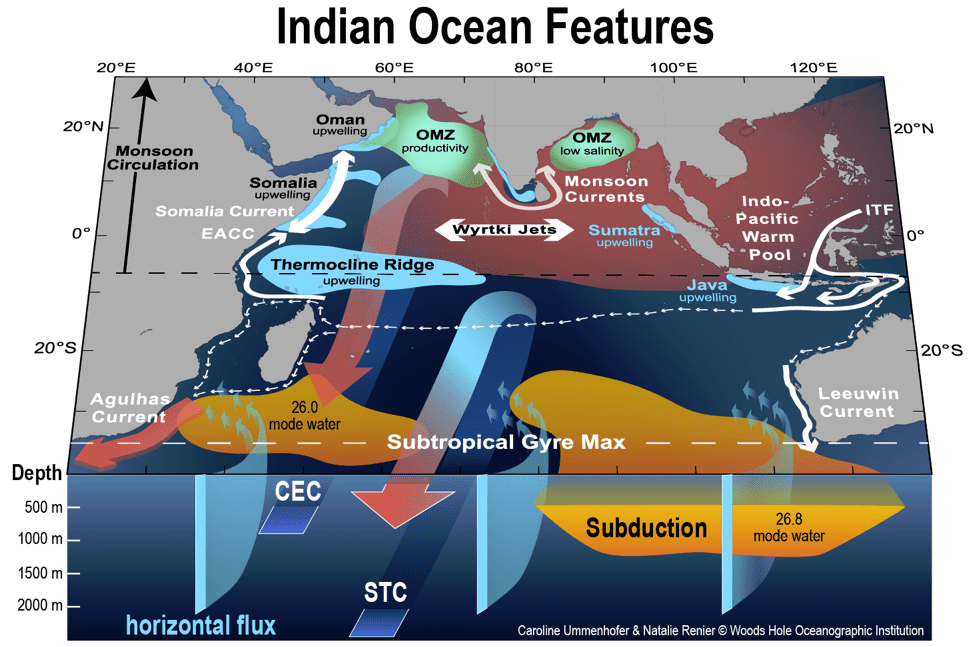Beal, L. M., and Coauthors, 2020. A roadmap to IndOOS-2: Better observations of the rapidly-warming Indian Ocean. Bulletin of the American Meteorological Society, https://doi.org/10.1175/BAMS-D-19-0209.1.

Indian Ocean main oceanographic features and phenomena. The surface circulation seasonally reverses north of 10°S under the influence of monsoons. The summer monsoon also promotes the intense Somali current as well as upwellings and high productivity in the western Arabian Sea. High surface layer productivity, sinking of biomass, and its remineralization at depth also leads to the formation of subsurface oxygen minimum zones (OMZs) in the Arabian Sea and Bay of Bengal. The Indo-Pacific warm pool is a region of intense air-sea interactions, where the Madden Julian oscillation, monsoon intra-seasonal oscillation, and Indian Ocean Dipole develop. The Indian Ocean is a gateway of the global oceanic circulation, with inputs of heat and freshwater through the Indonesian Throughflow, which exit the basin though boundary currents, mainly the Agulhas current along Africa, but also the Leeuwin current along Australia. There are two vertical overturning cells connecting subducted waters south of 30°S to the tropical Indian Ocean: the shallow subtropical overturning cell where water upwells in the “thermocline ridge” open ocean upwelling region, and the cross equatorial cell where water upwells further north in the Arabian Sea of the coast of Somalia and Oman. These cells are the main source of subsurface ventilation, due to the presence of continents to the north. (Taken from Beal et al., 2020)
